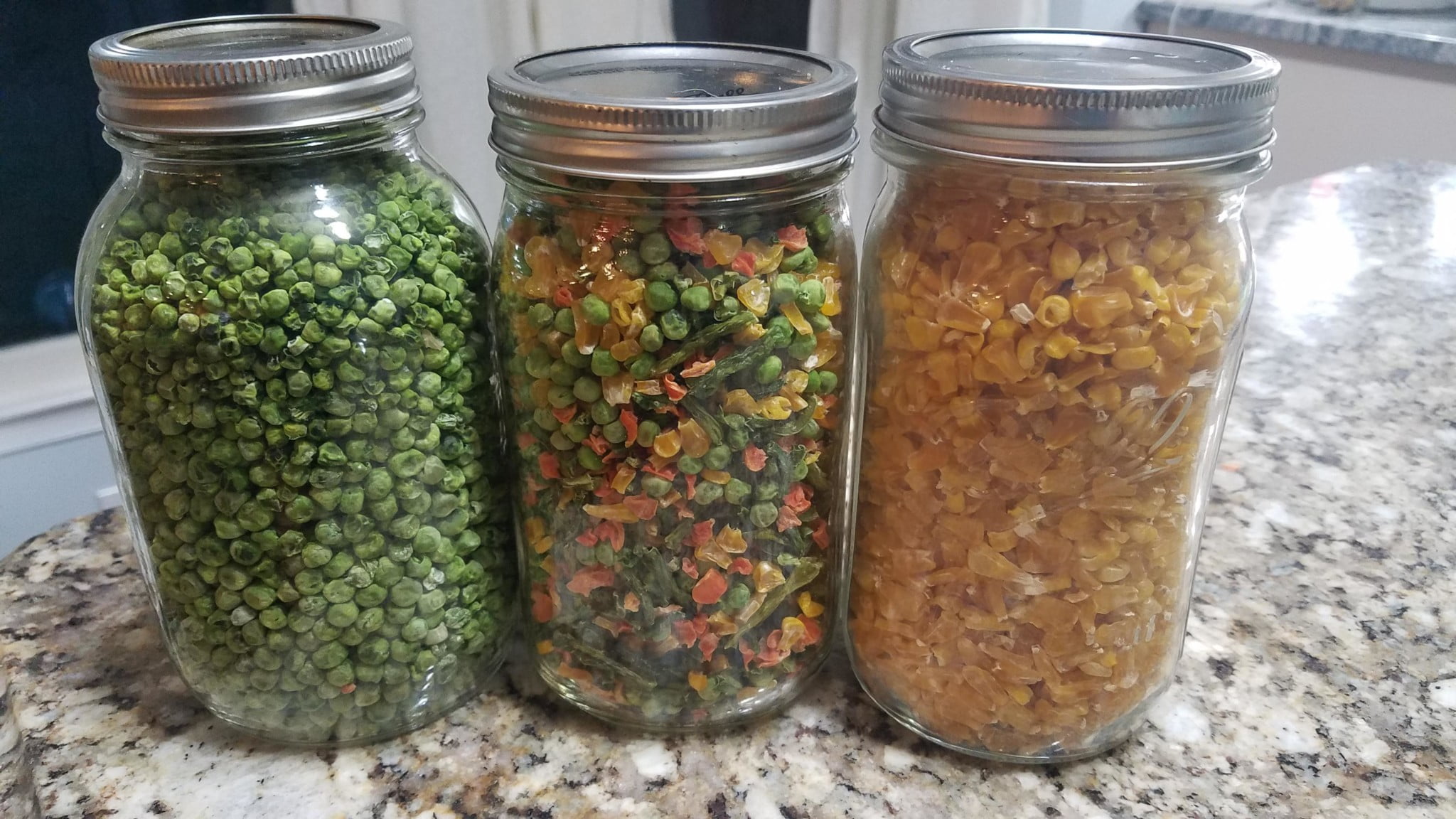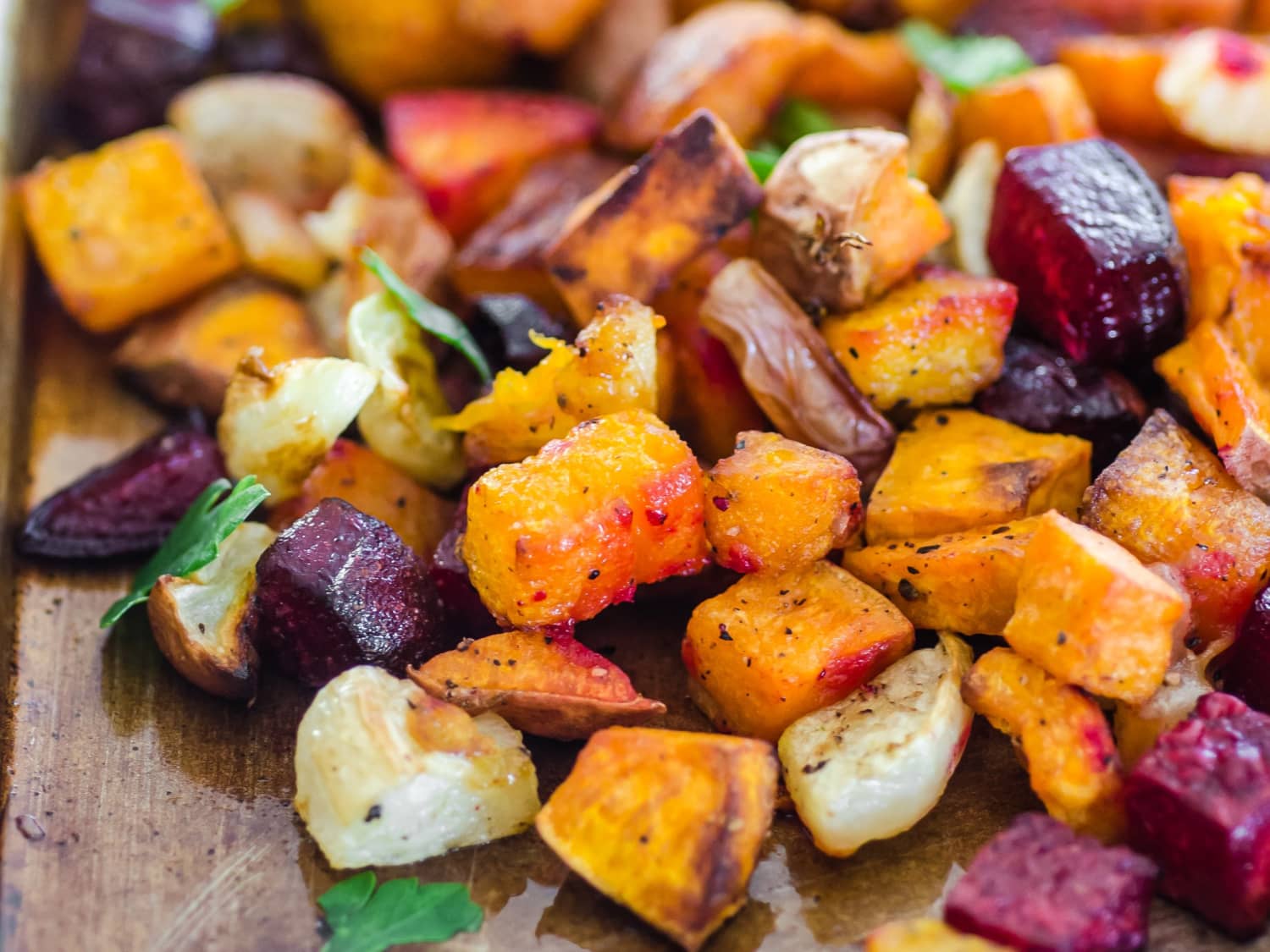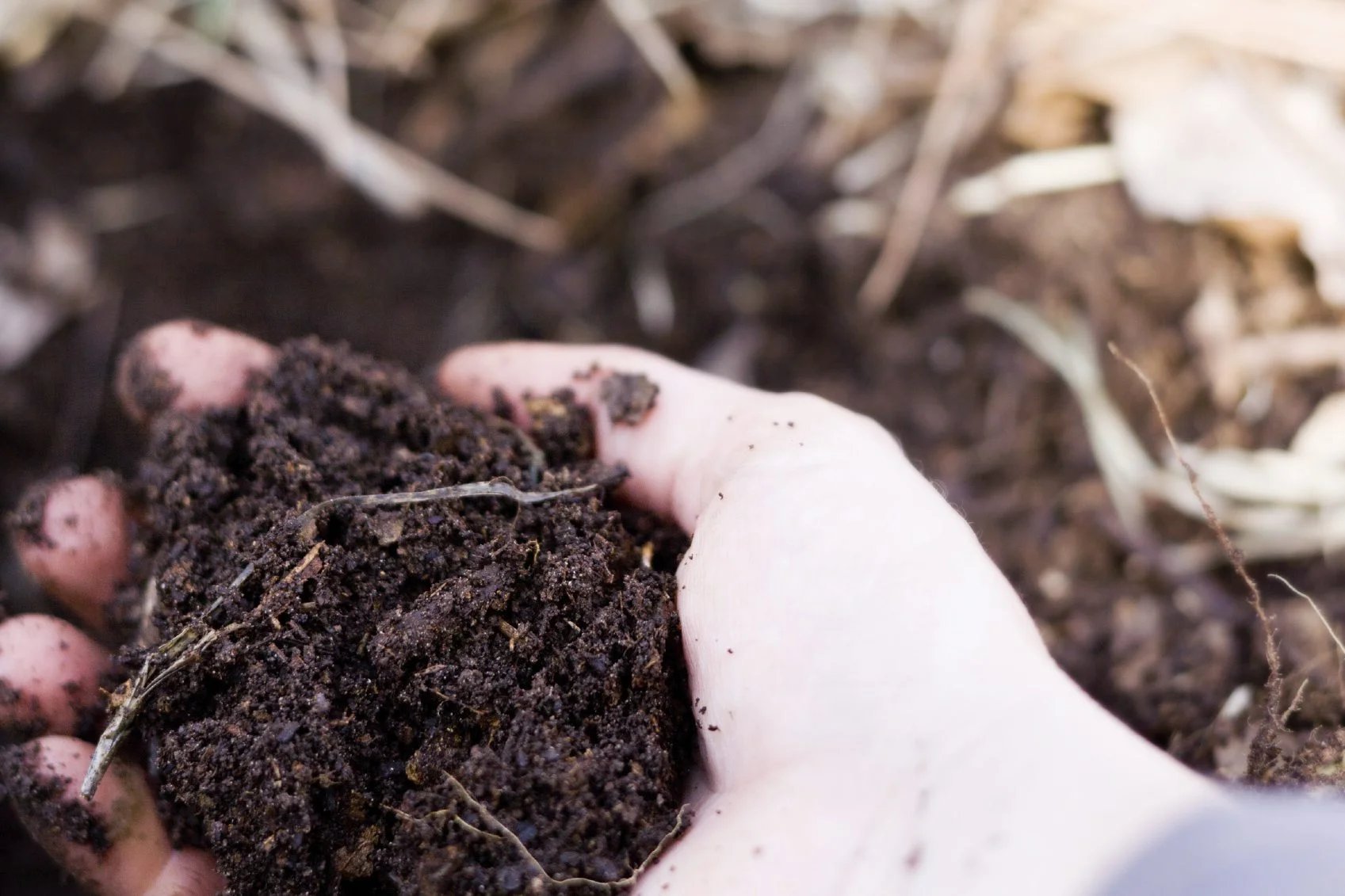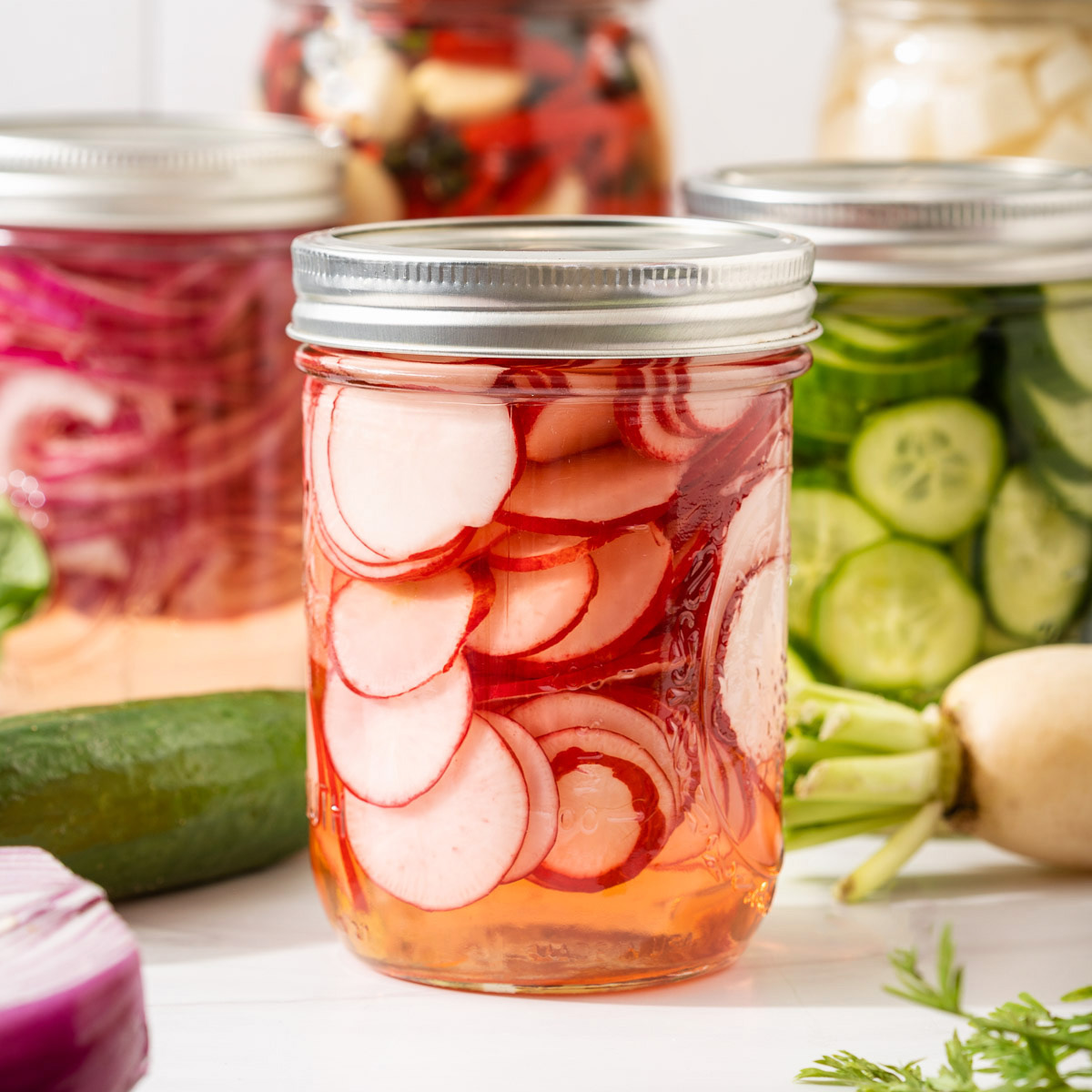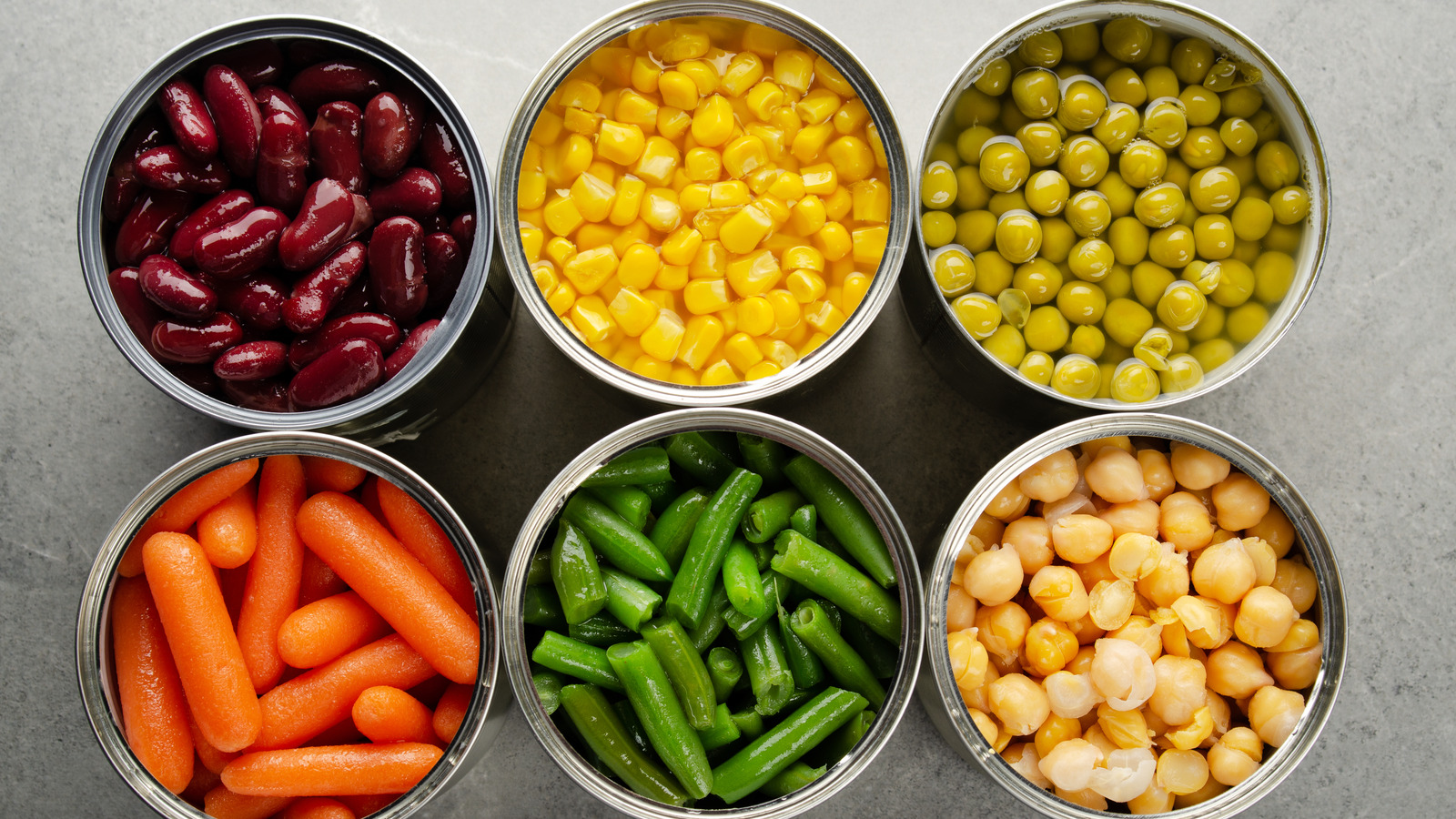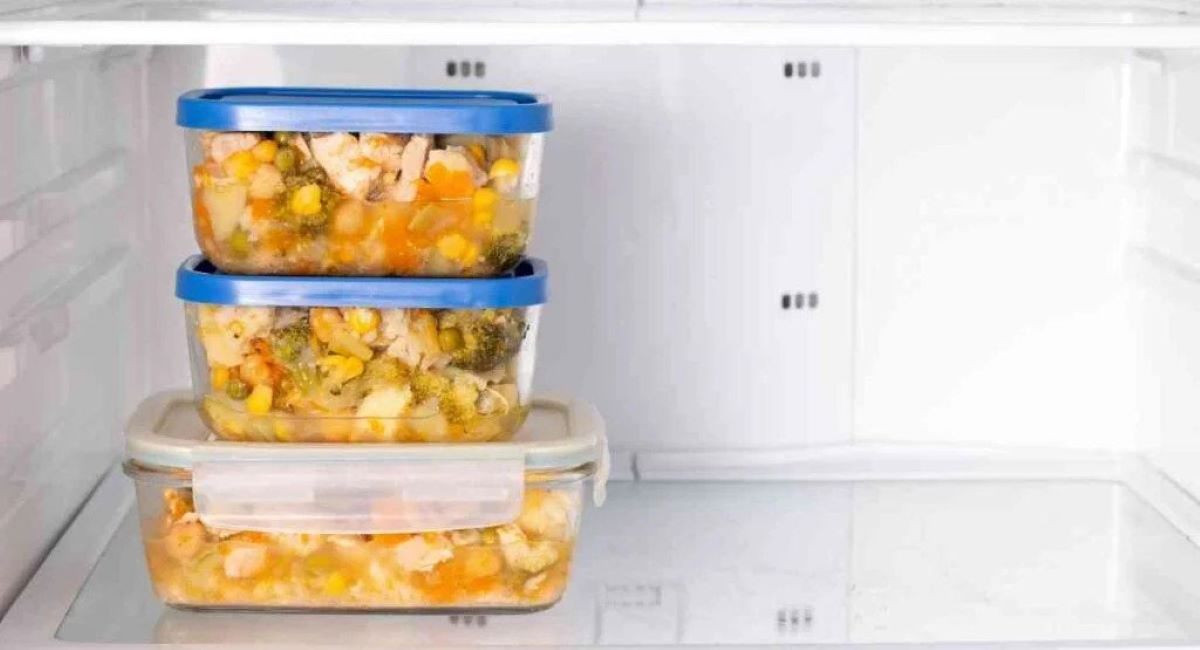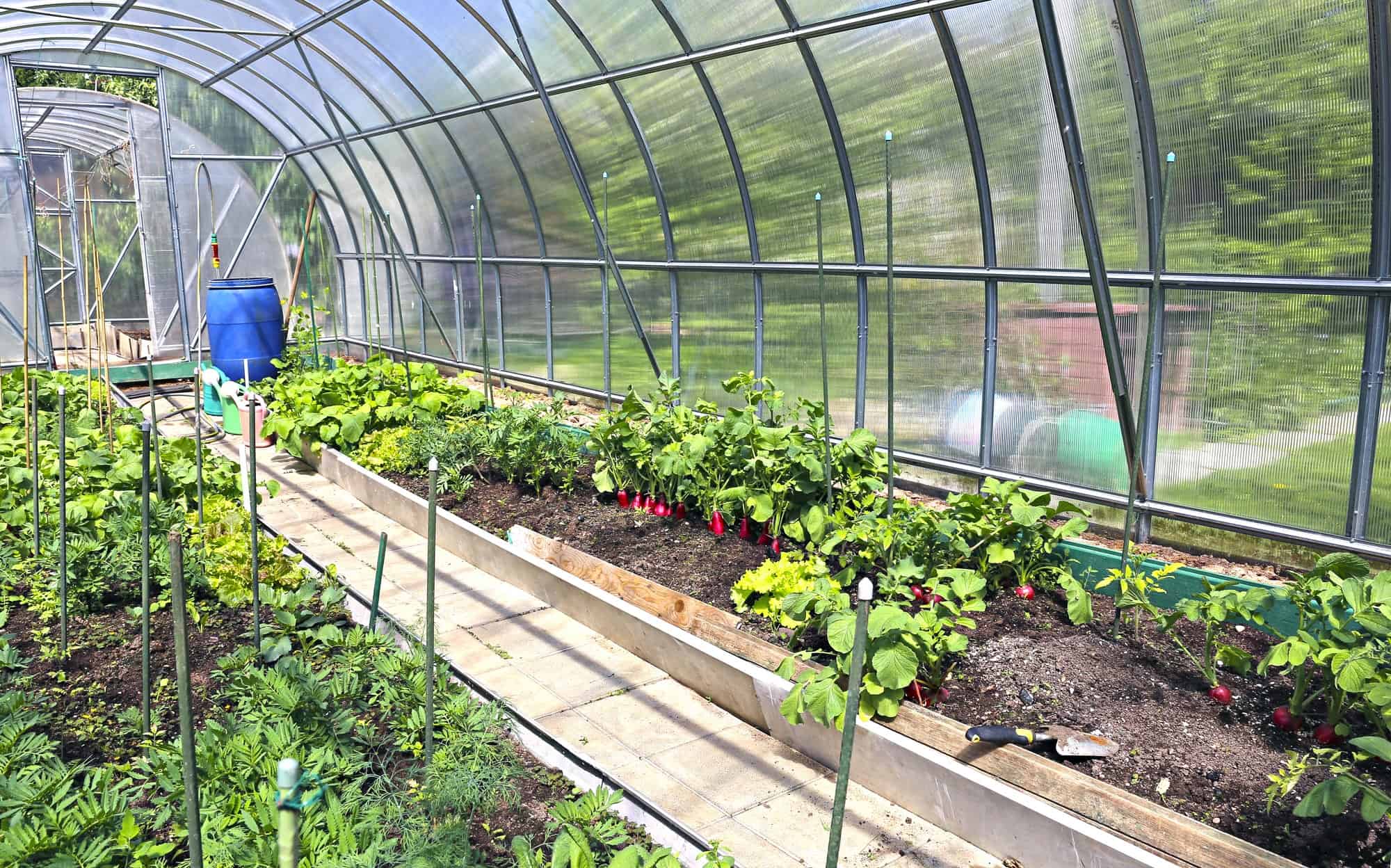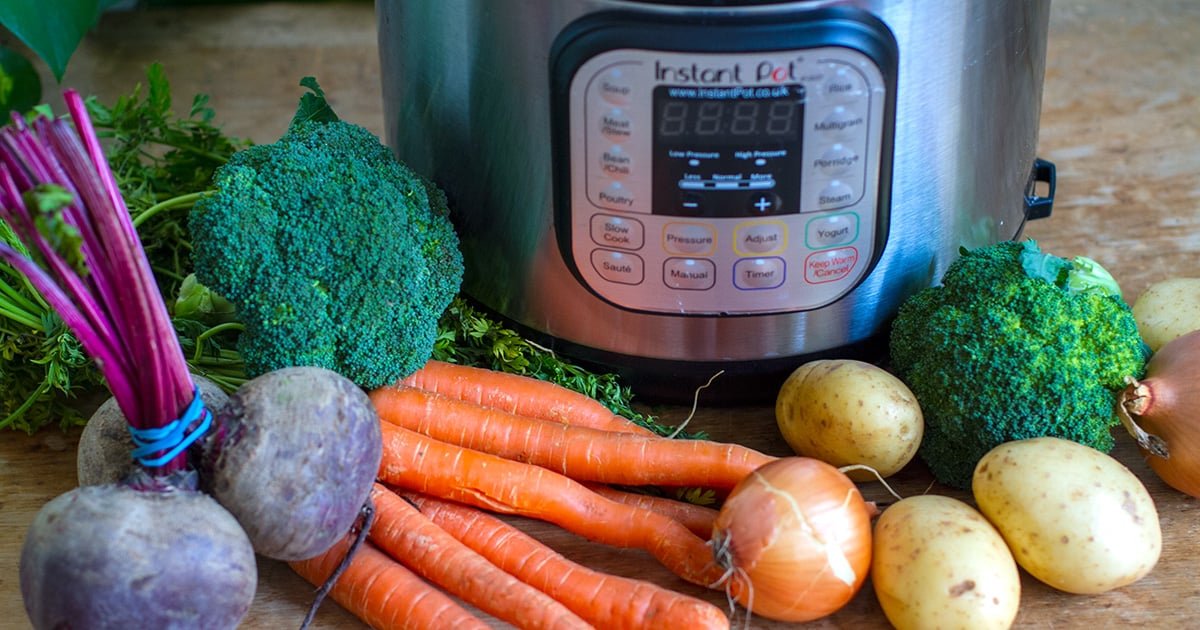Home>Gardening News and Trends>Latest News>How To Store Vegetables Long-Term
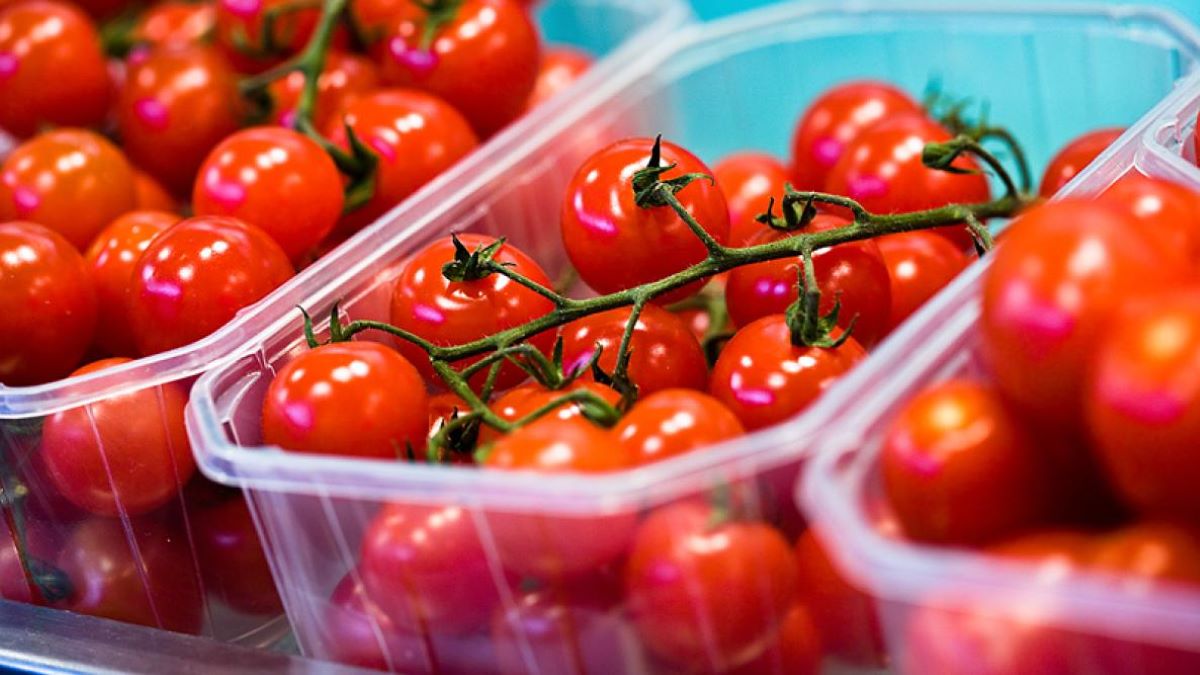

Latest News
How To Store Vegetables Long-Term
Modified: January 22, 2024
Discover the latest news on how to store vegetables long-term and keep them fresh for longer. Get expert tips and tricks for preserving your produce.
(Many of the links in this article redirect to a specific reviewed product. Your purchase of these products through affiliate links helps to generate commission for Chicagolandgardening.com, at no extra cost. Learn more)
Table of Contents
- Introduction
- Choosing the Right Vegetables for Long-Term Storage
- Preparing Vegetables for Storage
- Best Storage Conditions for Vegetables
- Storing Vegetables in a Root Cellar
- Storing Vegetables in a Cold, Dark Place
- Storing Vegetables in the Fridge
- Freezing Vegetables for Long-Term Storage
- Canning Vegetables for Long-Term Storage
- Dehydrating Vegetables for Long-Term Storage
- Tips for Extending Vegetable Shelf Life
- Conclusion
Introduction
When it comes to storing vegetables long-term, proper storage techniques are essential to maintain freshness and extend shelf life. Whether you have a surplus from your garden or want to stock up on seasonal produce, knowing how to store vegetables correctly will help you avoid spoilage and waste. With the right storage conditions, you can enjoy the nutritional benefits of fresh vegetables for an extended period.
Effective long-term storage methods not only preserve the flavor and texture of vegetables but also retain their nutritional value. By optimizing storage conditions and using appropriate preservation techniques, you can ensure that your vegetables stay fresh and delicious for months. In this article, we will explore various methods for storing vegetables long-term, from root cellars to refrigeration, freezing, canning, and dehydration.
Each vegetable has its own specific requirements for storage, so it’s important to choose the right vegetables for long-term storage. Some vegetables, such as root vegetables like potatoes and carrots, are naturally more suited for extended storage due to their hearty nature and ability to withstand cooler temperatures. On the other hand, leafy greens and delicate vegetables like lettuce and tomatoes require more careful handling and specific storage conditions to maintain their freshness.
By understanding the proper techniques for preparing and storing different types of vegetables, you can enjoy a diverse selection of fresh produce all year round. Whether you are an avid gardener, a farmer, or simply someone looking to make the most of your grocery purchases, this guide will provide you with valuable tips and strategies to store vegetables long-term.
In the following sections, we will delve into the specifics of each storage method, including the optimal conditions and steps involved in preparing and storing vegetables using that particular method. By the end of this article, you will have a comprehensive understanding of how to store vegetables long-term and be equipped to maintain a healthy stockpile of fresh produce at home.
Choosing the Right Vegetables for Long-Term Storage
Not all vegetables are suitable for long-term storage. Some varieties are more resilient and have a longer shelf life, making them ideal candidates for extended storage. When planning your long-term vegetable storage, consider selecting vegetables that are known for their ability to withstand storage conditions and maintain their quality over time.
Root vegetables such as potatoes, carrots, beets, turnips, and onions are excellent choices for long-term storage. These vegetables have a naturally higher starch content, which helps to preserve their freshness and flavor. They are also less prone to spoilage and rot.
Winter squash, including butternut squash and acorn squash, also have a long shelf life and can be stored for several months. Their hard outer skin acts as a protective layer, shielding the flesh inside from deterioration.
Cabbage and Brussels sprouts are cruciferous vegetables that can be stored for extended periods. With proper storage conditions, they can last for several weeks, allowing you to enjoy their nutritional benefits even during the offseason.
Other vegetables that are suitable for long-term storage include garlic, sweet potatoes, pumpkins, and rutabagas. These vegetables have properties that allow them to withstand colder temperatures and preserve their quality for an extended duration.
On the other hand, some vegetables are not well-suited for long-term storage and are better consumed fresh or within a shorter timeframe. Examples include lettuce, spinach, broccoli, and cauliflower, which are more delicate and prone to wilting or spoiling quickly. These vegetables are best stored using alternative methods such as refrigeration or freezing.
When selecting vegetables for long-term storage, it is important to choose specimens that are in optimal condition, free from bruises, rot, or disease. Any damaged or spoiled vegetables should be consumed immediately, as they will not store well and can compromise the quality of the other vegetables in storage.
By selecting the right vegetables for long-term storage, you can ensure a reliable supply of fresh produce throughout the year. Keep in mind that different storage methods may have varying effects on the quality and flavor of each vegetable, so consider the specific requirements of each vegetable when planning your storage strategy.
Preparing Vegetables for Storage
Properly preparing vegetables for storage is crucial to ensure their longevity and maintain their quality. Before storing vegetables for the long term, it is essential to follow a few key steps to minimize the risk of spoilage and maximize shelf life.
Firstly, it’s important to clean the vegetables thoroughly. Gently remove any excess soil, debris, or pests that may be present. Use a soft brush or cloth to clean the vegetables, being careful not to damage their skins. For root vegetables, trimming the tops and roots can help prevent moisture loss and extend their storage life.
Next, allow the vegetables to dry completely before storage. Excess moisture can lead to rot or the development of mold. Place the vegetables on a clean towel or air-dry them in a well-ventilated area for a few hours. This step is particularly important for leafy greens and delicate vegetables that are prone to wilting or spoilage.
Inspect the vegetables for any signs of damage or disease. Remove any bruised or spoiled areas carefully to prevent them from spreading to other vegetables during storage. Discard any vegetables that are severely damaged or showing signs of decay.
For certain types of vegetables, such as tomatoes and peppers, it may be beneficial to harvest them slightly underripe for extended storage. This allows them to mature and ripen gradually, maintaining better quality over time.
Some vegetables, like onions and garlic, benefit from curing before storage. Curing involves allowing the vegetables to dry in a well-ventilated area for several weeks. This process helps to develop a protective layer around the bulbs, allowing them to last longer in storage.
Once the vegetables are clean, dry, and inspected, consider sorting and organizing them according to their maturity and condition. Use separate containers or storage bags for each type of vegetable to prevent cross-contamination. Label the containers with the harvest date or the estimated expiration date to keep track of the freshness and rotation of your stock.
By taking the time to properly clean, dry, and inspect your vegetables before storage, you can significantly increase their shelf life and maintain their flavor and nutritional value. These simple steps are a crucial part of ensuring the long-term success of your vegetable storage endeavors.
Best Storage Conditions for Vegetables
Creating the optimal storage conditions is essential for preserving the freshness and quality of vegetables for an extended period. Different vegetables have varying temperature and humidity requirements, so it’s important to understand the ideal conditions for each type.
The general rule of thumb for vegetable storage is to keep them in a cool, dark, and well-ventilated environment. It’s important to maintain a consistent temperature and humidity level to prevent spoilage and minimize the risk of mold or rot.
Most root vegetables, such as potatoes, carrots, beets, and turnips, prefer storage temperatures between 32°F (0°C) and 40°F (4°C) with high humidity levels of around 90%. A root cellar is an excellent option for storing these vegetables, as it provides the cool, dark, and humid conditions they require. If you don’t have a root cellar, you can try using a basement or a cool corner of your garage as an alternative.
Leafy vegetables, such as lettuce, spinach, and kale, prefer cooler temperatures but with lower humidity levels. Aim to store these vegetables at temperatures around 32°F (0°C) to 40°F (4°C) with humidity levels of around 75-95%. Wrapping them in a damp paper towel or placing them in a perforated plastic bag can help maintain the necessary moisture levels.
Storing vegetables in a cold, dark place away from direct sunlight is essential to avoid wilting and discoloration. Sunlight can not only speed up the aging process but also lead to the breakdown of vitamins and nutrients in the vegetables. Keep them in a pantry or a cupboard that is away from heat sources and sunlight exposure.
Some vegetables, such as tomatoes, peppers, and eggplants, prefer slightly higher temperatures between 50°F (10°C) and 60°F (15°C). These vegetables can be stored on countertops or in baskets in a well-ventilated area, but it’s important to monitor their freshness regularly as they may deteriorate more quickly than others.
Certain vegetables, like onions and garlic, require good airflow to prevent moisture buildup, which can lead to rot. Store them in a mesh bag or a well-ventilated container in a cool, dry place.
Remember to regularly check your stored vegetables for any signs of spoilage, and remove any damaged or rotting vegetables immediately. Properly managing the storage conditions will help you maximize the shelf life of your vegetables and ensure their quality for months to come.
Storing Vegetables in a Root Cellar
A root cellar is a traditional and effective method for storing vegetables long-term. It provides the ideal conditions of low temperature, high humidity, and darkness that many vegetables require for extended storage. Having a root cellar is especially beneficial if you have a large amount of root vegetables to store, such as potatoes, carrots, beets, and turnips.
To create a root cellar, you can convert an existing basement, cellar, or an underground space. The key is to ensure that it is well-insulated, ventilated, and can maintain a consistent temperature and humidity level throughout the year.
The temperature in a root cellar should ideally range between 32°F (0°C) and 40°F (4°C). This cool temperature inhibits the growth of bacteria and slows down the natural ripening process of the vegetables, extending their freshness. Monitor the temperature regularly to ensure it remains within this range.
Humidity is another crucial factor in a root cellar. Aim for a humidity level of around 90% to prevent your vegetables from drying out or becoming too moist. You can achieve this by placing trays of water or damp sand in the root cellar or using a humidifier if necessary. Be sure to check the humidity levels regularly and adjust as needed.
Store root vegetables in wooden crates or baskets in a single layer, making sure they are not touching each other. This helps to promote airflow and prevents the spread of mold or rot if one vegetable begins to deteriorate. It’s a good practice to check your vegetables regularly and remove any damaged or spoiled ones to prevent them from affecting the others.
Leafy greens and delicate vegetables can also be stored in a root cellar, but they require separate storage containers or bags to maintain their freshness. Wrapping them in a damp paper towel or placing them in a perforated plastic bag can help retain the necessary moisture levels. Check these vegetables more often as they may not have as long a shelf life as root vegetables.
A root cellar is a convenient storage solution that allows you to extend the shelf life of your vegetables and enjoy fresh produce beyond the harvest season. By creating the right environment and following proper storage techniques, you can successfully store a variety of vegetables in a root cellar for several months.
Storing Vegetables in a Cold, Dark Place
If you don’t have access to a root cellar or prefer a simpler storage solution, storing vegetables in a cold and dark place can also work effectively. This method is especially suitable for households with limited storage space or for those who have a smaller amount of produce to store.
Identify a suitable location in your home that meets the requirements of being cool, dark, and well-ventilated. A basement, garage, or pantry can serve as a suitable storage spot as long as the temperature can be maintained within the recommended range for vegetable storage.
The temperature in this storage area should ideally be kept between 32°F (0°C) and 40°F (4°C). This cool environment helps to slow down the natural ripening process of the vegetables, minimizing spoilage and extending their freshness. Regularly monitor and adjust the temperature if needed to ensure it remains within the desired range.
Keep the storage area dark or use opaque containers to prevent exposure to light. Exposure to light can accelerate the breakdown of vitamins in vegetables and lead to color changes and loss of flavor. Use cardboard boxes or wooden crates to store the vegetables, making sure they are well-ventilated to prevent excess moisture buildup.
It’s important to organize the vegetables properly to prevent cross-contamination and allow for airflow. Store different types of vegetables separately, as some produce naturally emits gases that can affect the quality of others. Additionally, check your vegetables regularly and remove any damaged or spoiled ones to prevent the spread of rot.
While this storage method is suitable for most types of vegetables, it may not be ideal for delicate leafy greens or those that require higher humidity levels. For these vegetables, consider storing them in the refrigerator or freezing them instead to ensure their freshness and prevent wilting or decay.
Storing vegetables in a cold and dark place provides a simple yet effective solution for long-term storage. By maintaining the right temperature and darkness, you can extend the shelf life of your vegetables and enjoy fresh produce even beyond the harvest season.
Storing Vegetables in the Fridge
The refrigerator is a convenient and accessible storage option for a wide variety of vegetables. It allows you to maintain a consistently cool temperature and control humidity levels, which helps to keep vegetables fresh and extend their shelf life.
When storing vegetables in the fridge, it’s important to understand that different types have different requirements. Some vegetables thrive in a refrigerator’s colder temperature, while others are more susceptible to chilling injury and should be stored at slightly higher temperatures.
Leafy greens, such as lettuce, spinach, and kale, are best stored in the refrigerator’s crisper drawer or in a plastic bag with some air circulation. These vegetables need high humidity, so engaging the crisper’s humidity control function, or placing a damp paper towel in the bag, can help maintain necessary moisture levels.
Root vegetables, like carrots, beets, and radishes, can be stored in perforated plastic bags in the fridge’s main compartment. Make sure to remove the tops of these vegetables before storage to prevent moisture loss.
Bell peppers, cucumbers, and zucchini can also be stored in the main compartment but should be kept separate from fruits such as apples and bananas. Some fruits emit ethylene gas, which can accelerate the ripening and spoilage of certain vegetables.
Tomatoes are unique in that they lose texture and flavor when refrigerated. It’s best to store them at room temperature until they are fully ripe, and then consume them promptly. If you have excess ripe tomatoes, they can be stored in the fridge for a short period to slow down further ripening.
When storing vegetables in the fridge, it’s essential to keep them away from raw meat and other foods that can contaminate them. Regularly check the fridge for spoiled or rotting vegetables and discard them to prevent the spread of mold or bacteria to other produce.
It’s worth noting that while the fridge is a suitable storage method for many vegetables, it may not be the best option for all. Delicate herbs like basil, cilantro, and parsley, for example, are better stored in a vase or jar of water, similar to fresh-cut flowers, to maintain their freshness.
Storing vegetables in the fridge is a convenient way to extend their shelf life and maintain their quality. By understanding the specific needs of each vegetable and following proper storage techniques, you can maximize the freshness and nutritional value of your produce.
Freezing Vegetables for Long-Term Storage
Freezing is an excellent method for preserving the freshness of vegetables and extending their shelf life for long-term storage. It helps to retain the flavor, texture, and nutritional value of the vegetables, making them convenient to use in various dishes throughout the year.
To properly freeze vegetables, start by selecting fresh and high-quality produce. Wash the vegetables thoroughly to remove any dirt or debris. Blanching is a crucial step to preserve color, texture, and nutrients before freezing. Blanching involves briefly immersing the vegetables in boiling water followed by a quick cold-water bath to stop the cooking process. Blanching times can vary depending on the vegetable, so follow recommended guidelines for each type.
After blanching, drain the vegetables well and pat them dry to remove excess moisture. Excess moisture can result in freezer burn and affect the quality of the frozen vegetables.
Next, portion the vegetables into freezer-safe containers or resealable plastic bags. It’s essential to remove as much air as possible from the containers or bags before sealing to prevent freezer burn. Label each container with the name and date to keep track of the contents and ensure proper rotation when using the frozen vegetables.
Before freezing, consider a few vegetable-specific tips. For example, some vegetables like bell peppers, zucchini, and eggplant may benefit from a quick sauté or blanching in oil before freezing to help retain their texture. On the other hand, vegetables with a high water content like cucumbers and lettuce are not suitable for freezing as they will become mushy and lose their crispness.
When you are ready to use the frozen vegetables, there is no need to thaw them beforehand for certain dishes like soups, stews, or stir-fries. Simply add the frozen vegetables directly to the pot or pan. However, for other dishes or when you prefer a crisp texture, thaw the vegetables in the refrigerator overnight or using the defrost setting on the microwave.
Properly stored and frozen vegetables can last up to 10-12 months, but it’s best to use them within 6-8 months for optimal quality. Over time, the flavor and texture of the vegetables may deteriorate slightly, so it is recommended to consume them within the recommended time frame.
By freezing vegetables, you can enjoy the taste and nutritional benefits of fresh produce long after the growing season has ended. With careful preparation and storage, freezing is an excellent method to preserve the bounty of your garden or take advantage of seasonal produce year-round.
Canning Vegetables for Long-Term Storage
Canning is a popular method for preserving vegetables and ensuring long-term storage. It involves sealing vegetables in jars and then processing them in a water bath or pressure canner to create a vacuum seal that prevents spoilage and maintains their freshness. Canned vegetables can last for up to a year or more when stored properly.
To begin the canning process, you will need canning jars, lids, and bands or rings that create airtight seals. Start by washing the jars and lids with hot soapy water, ensuring they are clean and sterile to prevent the growth of harmful microorganisms.
Next, prepare the vegetables by washing them thoroughly and removing any unwanted parts. Some vegetables may require blanching before canning to maintain their texture and color. Blanching times may vary, so refer to specific guidelines for each vegetable.
Pack the prepared vegetables tightly into the sterilized jars, leaving the appropriate headspace as recommended for each vegetable. Headspace refers to the gap between the vegetables and the top of the jar. It allows for expansion during the canning process and creates a proper seal.
Prepare the canning liquid or brine according to the recipe for each specific vegetable. This liquid is usually a combination of water, vinegar, salt, and potentially other ingredients for flavor enhancement or preservation. Pour the hot liquid into the jars, covering the vegetables while maintaining the recommended headspace.
Wipe the rims of the jars with a clean, damp cloth to remove any residue or liquid that could interfere with the sealing process. Place the lids on the jars, followed by the bands or rings, and tighten them until fingertip tight. This means the band should be secure but not overly tightened.
Process the jars in a water bath canner or pressure canner, depending on the recipe and the specific requirements of the vegetables being canned. Follow the recommended time and temperature guidelines for each vegetable to ensure proper canning and achieve a safe and effective seal.
After processing, allow the jars to cool completely before checking the seals. The lids should be sucked downward in the center, indicating a successful vacuum seal. If any jars have not sealed properly, refrigerate and consume the contents within a few days or reprocess them following the proper canning procedures.
Store the sealed, cooled jars in a cool, dark place such as a pantry or cellar. Label each jar with the contents and date of canning for easy identification and proper rotation.
Canning provides a reliable method for preserving vegetables and enjoying their flavors long after the harvest season. With the proper equipment, techniques, and attention to safety, you can create a stockpile of home-canned vegetables that will keep your pantry well-stocked and your meals flavorful throughout the year.
Dehydrating Vegetables for Long-Term Storage
Dehydrating vegetables is a practical and easy method to preserve them for long-term storage. This process involves removing the moisture from the vegetables, significantly prolonging their shelf life while retaining their flavor, color, and nutritional value.
To dehydrate vegetables, start by washing them thoroughly and patting them dry. Remove any unwanted parts such as stems or tough skins. Slice the vegetables into uniform pieces to ensure consistent drying. You can use a sharp knife or a mandoline slicer for precise and even cuts.
There are several ways to dehydrate vegetables: using a food dehydrator, an oven, or the sun. A food dehydrator is the most efficient and convenient option, as it provides consistent heat and airflow, resulting in faster and more uniform drying. Follow the manufacturer’s instructions for specific temperature and timing settings.
If using an oven, spread the sliced vegetables on a baking sheet lined with parchment paper. Set the oven to its lowest temperature, usually around 140°F (60°C), and prop the oven door open slightly to allow moisture to escape. This technique may take longer than using a dehydrator, so monitor the vegetables closely to prevent over-drying or burning.
Alternatively, sun-drying can be done in regions with hot and dry climates. Place the sliced vegetables on screens or mesh trays and set them outside in direct sunlight. Cover them with cheesecloth or plastic mesh to protect them from insects and debris. It may take several days to weeks for the vegetables to dehydrate fully, depending on the weather conditions.
Regardless of the drying method, the vegetables are ready when they feel crisp and brittle with no signs of moisture. Cool the dried vegetables completely before storing them in airtight containers, such as glass jars or vacuum-sealed bags. Label each container with the name and date of drying for future reference.
Store the dehydrated vegetables in a cool and dark place away from direct sunlight and moisture. They will remain in good condition for several months to a year, although the flavor and texture may gradually decline over time.
When ready to use the dehydrated vegetables, simply rehydrate them by soaking them in water or adding them directly to soups, stews, or other dishes during cooking. The rehydrated vegetables will regain their original texture and taste, making them a versatile and convenient option for various recipes.
Dehydrating vegetables is an effective way to preserve them for long-term storage, allowing you to enjoy the flavors and nutritional benefits of fresh produce throughout the year. By taking the time to dry vegetables properly, you can create a stash of nutritious and delicious ingredients ready to enhance your culinary creations.
Tips for Extending Vegetable Shelf Life
Effectively extending the shelf life of vegetables not only reduces waste but also ensures that you can enjoy fresh produce for a longer period. By following these tips, you can optimize storage conditions and minimize spoilage, allowing your vegetables to stay fresher for as long as possible.
- Harvest at the Right Time: Harvest vegetables at their peak ripeness, as immature or overripe vegetables are more prone to spoilage.
- Remove Damaged Parts: Inspect your vegetables and remove any damaged or rotten parts before storing to prevent the spread of decay to other vegetables.
- Store Separately: Store vegetables separately, as some varieties emit gases that can accelerate the ripening and deterioration of others.
- Use Breathable Containers: Use breathable containers like mesh bags or perforated plastic bags to maintain proper airflow and reduce excess moisture.
- Enhance Humidity: For leafy greens and certain vegetables that prefer higher humidity, place a damp paper towel or a bowl of water near them to increase humidity levels.
- Wrap Herbs: Preserve the freshness of herbs by wrapping them in a damp paper towel and placing them in a plastic bag in the refrigerator.
- Proper Storage Temperature: Follow the recommended temperature guidelines for each vegetable type to maintain its freshness and quality.
- Regularly Monitor and Rotate: Regularly check your stored vegetables for any signs of spoilage, and rotate them so that older ones are used first.
- Consider Preservation Methods: Explore various preservation methods like canning, freezing, or dehydrating to extend the shelf life of your vegetables.
- Avoid Refrigerating Potatoes and Onions: Potatoes and onions are best stored in cool, dark places outside the refrigerator, as refrigeration can negatively affect their flavor and texture.
- Don’t Wash Before Storage: Avoid washing vegetables before storing them unless absolutely necessary, as moisture can lead to faster spoilage.
- Use Ethylene Absorbers: Ethylene absorbent packets or sachets can help absorb the gas that accelerates ripening and deterioration of certain fruits and vegetables.
- Properly Seal Bags and Containers: Ensure airtight seals on bags or containers to prevent exposure to air and minimize moisture loss.
- Follow Storage Guidelines: Refer to specific storage guidelines for each type of vegetable to ensure optimal conditions and maximize shelf life.
By implementing these tips, you can reduce waste, extend the freshness of your vegetables, and maximize their nutritional value. With proper storage and a little bit of care, you can enjoy the deliciousness of your harvest for longer periods throughout the year.
Conclusion
Properly storing vegetables for long-term storage is essential to maximize their shelf life and retain their freshness, flavor, and nutritional value. Whether you have an abundant garden harvest or want to stock up on seasonal produce, understanding the various storage methods and implementing best practices can help you enjoy a wide variety of vegetables all year round.
Choosing the right vegetables for long-term storage, such as root vegetables and winter squash, ensures that you have hardy options that can withstand extended storage. Properly preparing vegetables through cleaning, drying, and inspecting helps minimize the risk of spoilage and extends their shelf life.
Different storage methods, like storing in a root cellar, keeping in a cold, dark place, refrigeration, freezing, canning, or dehydrating, offer a range of options to suit your storage capacity and preferences. Each method comes with its own set of requirements and benefits, allowing you to choose the most suitable approach for your needs.
By following the recommended guidelines for each storage method and considering specific vegetable requirements, you can successfully store vegetables for an extended period. Monitoring the storage conditions, checking for spoilage regularly, and ensuring proper rotation are key to maintaining the freshness and quality of your vegetables.
Remember, not all vegetables are suitable for long-term storage, and some may require alternative methods like refrigeration or freezing. By understanding the characteristics and specific needs of each vegetable, you can make informed decisions regarding storage techniques.
With these valuable insights and techniques, you can confidently store and preserve vegetables for months, reducing food waste and ensuring a steady supply of fresh produce. So, embrace the art of long-term vegetable storage and enjoy the bountiful benefits of nature’s gems all year round.
